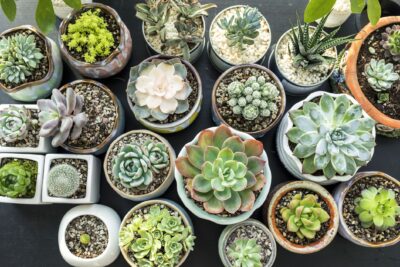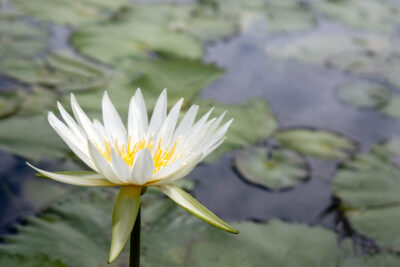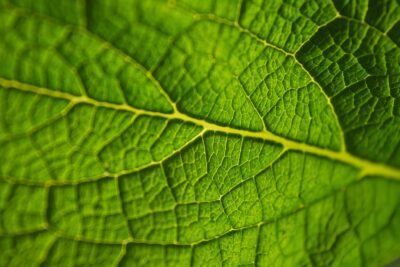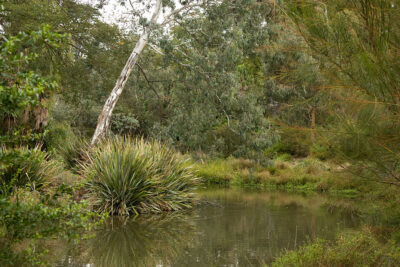
Unveiling Vera Higgins: Discovering Her Succulent Secrets

Vera Higgins, a renowned horticulturist and succulent enthusiast, has captivated the gardening world with her expertise and knowledge in cultivating and caring for these unique plants. With her extensive experience and passion for succulents, she has become a go-to resource for both beginners and experienced gardeners alike.
We will delve into the world of succulents and explore the secrets that Vera Higgins has uncovered throughout her career. We will learn about the different types of succulents, their characteristics, and how to care for them effectively. Additionally, we will discover Vera's personal tips and techniques for propagation, pest control, and creating stunning succulent arrangements. Whether you are a novice succulent lover or a seasoned gardener looking to expand your knowledge, this article will provide valuable insights and inspiration for your succulent journey.
- Use well-draining soil to prevent root rot in your succulents
- Place your succulents in a location with plenty of sunlight to promote healthy growth
- Water your succulents sparingly, allowing the soil to dry out between waterings
- Protect your succulents from extreme temperatures and frost by bringing them indoors during winter
- Propagate your succulents by taking stem or leaf cuttings and allowing them to root
- Remove any dead or dying leaves from your succulents to maintain their overall health
- Avoid over-fertilizing your succulents, as this can lead to excessive growth and weak stems
- Handle your succulents with care to prevent damage or breakage
- Keep an eye out for pests such as mealybugs or aphids and take appropriate measures to control them
- Experiment with different succulent varieties to add diversity and visual interest to your collection
- Frequently Asked Questions
Use well-draining soil to prevent root rot in your succulents
Succulents are known for their ability to store water in their leaves, stems, and roots, allowing them to thrive in arid environments. However, this unique adaptation also makes them prone to root rot if not provided with the proper soil conditions.
To ensure the health and longevity of your succulents, it is crucial to use well-draining soil that allows excess water to escape, preventing waterlogged roots. Well-draining soil mimics the sandy, rocky soils found in their natural habitats, providing the ideal growing medium for these water-wise plants.
When selecting soil for your succulents, look for a mix specifically formulated for cacti and succulents. These blends typically contain a combination of organic matter, such as peat moss or coconut coir, and inorganic materials like perlite or pumice. The organic matter helps retain some moisture, while the inorganic components promote excellent drainage.
Here are some key benefits of using well-draining soil for your succulents:
 Identifying the Trailing Succulent: Which Species is it?
Identifying the Trailing Succulent: Which Species is it?- Prevents root rot: Succulents are highly susceptible to root rot caused by overwatering or prolonged exposure to moisture. Well-draining soil allows excess water to escape quickly, reducing the risk of rotting roots.
- Enhances root development: Proper drainage encourages healthy root growth by providing oxygen to the roots and preventing them from becoming waterlogged. This promotes overall plant health and vigor.
- Reduces the risk of fungal diseases: Excess moisture in the soil can create a favorable environment for fungal diseases, such as powdery mildew. Well-draining soil helps keep the roots dry, minimizing the risk of fungal infections.
- Prevents soil compaction: Soil that retains too much water can become compacted over time, making it difficult for succulent roots to access oxygen and nutrients. Well-draining soil maintains its structure, ensuring optimal root function.
- Allows for better control of watering: With well-draining soil, you can water your succulents more freely without the fear of overwatering. The excess water will quickly drain away, preventing waterlogged conditions.
Remember, using well-draining soil is just one aspect of proper succulent care. It is also essential to water your succulents sparingly, provide adequate sunlight, and avoid overcrowding in containers. By giving your succulents the right growing conditions, you can enjoy their beauty and resilience for years to come.
Place your succulents in a location with plenty of sunlight to promote healthy growth
When it comes to caring for your succulents, one of the most important factors to consider is their exposure to sunlight. Succulents are known for their ability to thrive in bright and sunny conditions, so it's essential to provide them with ample sunlight to promote healthy growth.
As a general rule, succulents require at least 6 hours of direct sunlight each day. This means that you should place them in a location that receives plenty of natural light, such as a south-facing window or a spot in your garden that isn't shaded by trees or buildings.
It's important to note that different types of succulents have varying sunlight requirements. Some varieties, like Sedum and Echeveria, can tolerate full sun and thrive in intense sunlight. On the other hand, certain succulents, such as Haworthia and Gasteria, prefer partial shade and can be easily sunburned if exposed to too much direct sunlight.
To ensure that your succulents receive the right amount of sunlight, it's a good idea to monitor their response to the light they are receiving. If you notice that your succulents are becoming pale or stretching towards the light, it could be an indication that they need more sunlight. Conversely, if you observe signs of sunburn, such as brown or black spots on the leaves, it may be necessary to provide them with some shade.
In addition to sunlight, it's essential to consider the temperature and humidity levels in the area where you place your succulents. Most succulents thrive in warm and dry conditions, so make sure to choose a location that provides adequate air circulation and avoids excessive humidity. This will help prevent issues like root rot and fungal diseases that can be caused by damp conditions.
 Understanding Succulent Leaf Texture: Soft and Wrinkly Leaves
Understanding Succulent Leaf Texture: Soft and Wrinkly LeavesRemember, finding the right balance of sunlight, temperature, and humidity is crucial for the health and growth of your succulents. By placing them in a location with plenty of sunlight and suitable environmental conditions, you'll be well on your way to unveiling the succulent secrets of Vera Higgins and enjoying beautiful, thriving plants.
Water your succulents sparingly, allowing the soil to dry out between waterings
Succulents are known for their ability to store water in their leaves, stems, and roots, making them perfect plants for those who are not the most diligent when it comes to watering. One important rule to keep in mind when caring for succulents is to water them sparingly.
Watering Tip: Allow the soil to dry out completely between waterings. This is because succulents are prone to root rot if they are overwatered. To check if your succulent needs water, stick your finger about an inch into the soil. If it feels dry, it's time to water. If it's still moist, wait a few more days before watering.
How often should you water? The frequency of watering depends on various factors such as the type of succulent, the size of the pot, and the climate conditions. As a general guideline, most succulents thrive with a watering schedule of once every 1-2 weeks during the growing season (spring and summer) and less frequent watering during the dormant season (fall and winter).
Remember: It's better to underwater than to overwater your succulents. These resilient plants have adapted to survive in arid environments, so they can tolerate drought conditions much better than excessive moisture.
Signs of Overwatering
- Yellowing or wilting leaves
- Soggy or mushy stems
- Root rot or blackened roots
- Fungus or mold growth on the soil surface
If you notice any of these signs, it's a clear indication that you are watering your succulents too frequently. Adjust your watering routine accordingly and give your succulents time to recover.
 Cacti vs. Succulents: Understanding the Key Differences
Cacti vs. Succulents: Understanding the Key DifferencesSigns of Underwatering
- Shriveled or wrinkled leaves
- Drooping or soft stems
- Leaves falling off easily
- Dull, dry, or brittle appearance
When you see these signs, it's essential to increase the frequency of watering. However, always ensure that you are not overcompensating and still allowing the soil to dry out between waterings.
By following these watering guidelines, you can ensure that your succulents stay healthy, vibrant, and thrive in their environment. Remember, proper watering is just one element in the overall care of succulent plants.
Protect your succulents from extreme temperatures and frost by bringing them indoors during winter
As the colder months approach, it becomes crucial to protect your precious succulent collection from the harsh effects of winter. Succulents are known for their ability to thrive in warm and arid environments, making them highly susceptible to damage caused by freezing temperatures and frost. By taking the necessary steps to bring your succulents indoors during winter, you can ensure their survival and maintain their vibrant beauty all year round.
When temperatures drop below freezing, succulents are at risk of experiencing frost damage. The cells within the plant can burst due to ice formation, leading to irreversible harm. To prevent this, carefully observe the weather forecast and bring your succulents inside when temperatures are expected to reach near or below freezing.
Before moving your succulents indoors, it is essential to assess their current health and condition. Remove any dead leaves, pests, or diseased parts to prevent the spread of infection to other plants. This step also allows you to better observe your succulents' overall well-being and address any potential issues before they worsen.
Choose an appropriate indoor location for your succulents, preferably near a window that receives plenty of sunlight. Succulents require at least six hours of direct sunlight each day to maintain optimal growth. If natural light is limited, consider using artificial grow lights to supplement their light requirements.
 Exploring the Origins of Succulents: Unveiling their Native Habitats
Exploring the Origins of Succulents: Unveiling their Native HabitatsEnsure your succulents are potted in well-draining soil and containers with drainage holes. Excessive moisture can lead to root rot, which is particularly problematic in the winter when succulents are less actively growing. Use a cactus or succulent-specific soil mix to provide the ideal growing conditions.
During the winter months, succulents enter a state of dormancy, where their growth slows down significantly. As a result, their water requirements decrease. Avoid overwatering your succulents during this period, as excess moisture can lead to root rot. Allow the soil to dry out completely before watering, and be sure to discard any excess water that accumulates in the drainage tray.
Adding a layer of mulch to the top of your succulent's soil can provide insulation and help regulate soil temperature. This extra layer of protection can also prevent rapid evaporation, ensuring that your succulents receive adequate moisture without the risk of waterlogging.
Lastly, keep an eye out for common winter pests such as mealybugs and scale insects. These pests can take advantage of the warm indoor environment and infest your succulents. Regularly inspect your plants for any signs of infestation, and take appropriate measures to control and eliminate these pests.
By following these guidelines and bringing your succulents indoors during winter, you can shield them from extreme temperatures and frost damage. With proper care and attention, your succulents will thrive and continue to bring joy and beauty to your indoor space throughout the colder months.
Propagate your succulents by taking stem or leaf cuttings and allowing them to root
 Are Air Plants Succulents? Exploring Tillandsia Classification
Are Air Plants Succulents? Exploring Tillandsia ClassificationIf you've fallen in love with the beauty and uniqueness of succulents, you'll be thrilled to know that you can easily propagate these fascinating plants by taking stem or leaf cuttings. This process allows you to create new plants from existing ones, enabling you to expand your succulent collection or share them with fellow succulent enthusiasts.
Stem cuttings:
To propagate your succulents using stem cuttings, follow these simple steps:
- Choose a healthy succulent plant that you wish to propagate.
- Using a clean and sharp pair of scissors or pruning shears, cut a stem from the parent plant. Ensure that the stem is at least 3-4 inches long.
- Allow the cutting to dry and callous over for a few days to prevent rotting.
- Prepare a well-draining potting mix suitable for succulents.
- Make a small hole in the soil and gently insert the stem cutting into it.
- Place the pot in a bright area with indirect sunlight and water sparingly, allowing the soil to dry out between waterings.
- After a few weeks, roots will begin to develop, and you'll notice new growth above the soil.
Leaf cuttings:
If you prefer to propagate your succulents using leaf cuttings, here's what you need to do:
- Select a healthy leaf from your desired succulent.
- Gently twist the leaf from the stem, ensuring that the entire leaf is intact.
- Allow the leaf cutting to dry and callous over for a few days.
- Prepare a well-draining potting mix suitable for succulents.
- Place the leaf cutting on top of the soil, ensuring that the bottom end is in contact with the soil.
- Keep the pot in a bright location with indirect sunlight and mist the leaf occasionally to provide moisture.
- Over time, tiny new succulents, called "pups," will emerge from the base of the leaf.
By following these simple steps, you'll be able to propagate your succulents successfully and watch as your collection grows. Whether you choose stem or leaf cuttings, experimenting with various succulent species will unveil the remarkable ability of these plants to regenerate and thrive.
Remove any dead or dying leaves from your succulents to maintain their overall health
 Exploring the Role and Function of Aerial Roots in Succulent Plants
Exploring the Role and Function of Aerial Roots in Succulent PlantsWhy removing dead leaves is important
When it comes to succulent care, one of the most important tasks is removing any dead or dying leaves from your plants. While it may seem like a simple and insignificant step, it actually plays a crucial role in maintaining the overall health and appearance of your succulents.
Preventing the spread of diseases
Dead leaves are not only unsightly, but they can also attract pests and harbor diseases. By removing them promptly, you can prevent the spread of any potential infections or infestations that may harm your succulents.
Enhancing the aesthetic appeal
Another reason to remove dead leaves is to enhance the aesthetic appeal of your succulents. These plants are known for their striking and unique appearance, and removing any dead or dying leaves will allow the healthy ones to shine and showcase their vibrant colors and patterns.
Promoting healthy growth
 Non-Cacti Succulents: Identifying Succulent Varieties beyond Cacti
Non-Cacti Succulents: Identifying Succulent Varieties beyond CactiBy removing dead leaves, you are also encouraging healthy growth in your succulents. Dead leaves can hinder the plant's ability to absorb sunlight and nutrients, which are essential for their survival and development. Removing these leaves will give your succulents the space and resources they need to flourish.
How to remove dead leaves
Removing dead leaves from succulents is a simple process. Here's a step-by-step guide to help you:
- Inspect your plants: Take a close look at each succulent and identify any dead or dying leaves.
- Gently pull or twist: Using your fingers or a pair of tweezers, carefully remove the dead leaves by gently pulling or twisting them off. Be cautious not to damage the healthy parts of the plant.
- Dispose of the leaves: Once you have removed the dead leaves, dispose of them in a compost bin or trash can.
- Clean the plant: Use a soft brush or damp cloth to gently wipe away any remaining debris or dust from the succulent.
Remember to regularly check your succulents for dead leaves and remove them as soon as you notice them. By keeping your plants free from dead foliage, you'll be helping them thrive and revealing their true beauty.
Avoid over-fertilizing your succulents, as this can lead to excessive growth and weak stems
Succulents are known for their ability to thrive in arid conditions and store water in their leaves, stems, and roots. While these hardy plants may seem low-maintenance, it's important to strike the right balance when it comes to fertilizing them. Over-fertilizing can actually do more harm than good, causing your succulents to grow too quickly and develop weak, leggy stems.
When it comes to succulents, less is often more. These plants have adapted to survive in nutrient-poor environments, so they don't require frequent or heavy feeding. In fact, excessive fertilization can disrupt the plant's natural growth pattern and lead to a variety of issues.
 Find the Perfect Succulent Plant Identifier for Easy Identification
Find the Perfect Succulent Plant Identifier for Easy Identification- Weak Stems: Over-fertilization can cause rapid growth, resulting in elongated, weak stems that are prone to bending or breaking. This not only affects the plant's overall appearance but also makes it more susceptible to damage.
- Root Burn: Succulents have delicate root systems that can be easily damaged by high concentrations of fertilizers. Excessive fertilization can lead to root burn, causing the roots to become discolored, stunted, or even rot.
- Pest and Disease Vulnerability: Over-fertilized succulents may attract more pests and diseases. The fast growth caused by excessive nutrients can make the plants more attractive to insects, such as aphids or mealybugs, and susceptible to fungal infections.
To keep your succulents healthy and thriving, it's essential to follow a proper fertilization routine. Here are a few tips to ensure you're providing the right nutrients without going overboard:
- Choose a balanced fertilizer: Look for a fertilizer specifically designed for succulents or cacti. These fertilizers typically have a balanced ratio of nitrogen, phosphorus, and potassium (NPK) suitable for the plants' needs.
- Fertilize sparingly: Succulents only need to be fertilized during their active growing season, which is usually spring and summer. Apply the fertilizer at half strength or dilute it further to avoid overfeeding.
- Focus on the roots: Apply the fertilizer directly to the soil, targeting the roots rather than spraying it on the leaves. This ensures that the nutrients reach the plant's root system without causing damage to the foliage.
- Observe your plants: Keep an eye on your succulents for any signs of nutrient deficiencies or excesses. Yellowing leaves or stunted growth may indicate a lack of nutrients, while discoloration, wilting, or spotting could be a sign of over-fertilization.
Remember, succulents are adapted to thrive in harsh conditions, so they don't require constant feeding. By avoiding the temptation to over-fertilize, you can help your succulents maintain their natural beauty and resilience.
Handle your succulents with care to prevent damage or breakage
When it comes to succulents, one of the most important things to keep in mind is how to handle them with care. These delicate plants can easily get damaged or even break if not handled properly. Here are some essential tips to ensure your succulents stay in perfect condition:
1. Avoid touching the leaves
Succulent leaves are quite sensitive and can get bruised or scarred with even the lightest touch. It's best to avoid touching the leaves altogether, especially the ones towards the center of the plant. Instead, handle the succulent from the base or use a pair of clean, soft tweezers when necessary.
2. Use a gentle touch when repotting
When it's time to repot your succulent, be gentle with the roots. Avoid pulling or tugging on them as this can cause damage. Instead, gently loosen the soil around the roots and carefully lift the plant from the pot. Be patient and take your time to avoid any unnecessary stress on the plant.
3. Provide proper support during transportation
If you need to transport your succulents, it's crucial to provide them with proper support to prevent breakage. You can place them in a sturdy box or use cushioning material such as bubble wrap to protect them. Make sure the plants are secured in place to minimize any movement during transit.
4. Avoid excessive watering
Overwatering is one of the leading causes of succulent damage. These plants are adapted to survive in arid conditions and don't require frequent watering. It's important to follow a proper watering schedule and avoid excessive moisture, which can lead to root rot or weak stems.
 Find Your Perfect Succulent with Our PDF Identification Chart
Find Your Perfect Succulent with Our PDF Identification Chart5. Handle with clean hands
When handling your succulents, always make sure your hands are clean. Any dirt, oils, or chemicals on your hands can transfer to the leaves and cause harm to the plant. Washing your hands before touching your succulents will help maintain their health and prevent any potential damage.
By following these care tips and handling your succulents with caution, you can ensure they thrive and remain visually stunning. Remember, a little extra care goes a long way in preserving the beauty of your precious succulent collection!
Keep an eye out for pests such as mealybugs or aphids and take appropriate measures to control them
Pests can be a nuisance for any plant lover, and Vera Higgins succulents are no exception. Mealybugs and aphids are common pests that can infest your succulent plants if left unchecked. These tiny insects feed on the sap of the plant, causing damage and potentially compromising its health.
To keep your Vera Higgins succulents healthy and pest-free, it is important to be vigilant and regularly inspect your plants for any signs of infestation. Look out for small white fuzz or tiny green or black insects on the leaves, stems, or soil.
If you discover any pests on your succulents, it is crucial to take immediate action to control their population. There are several methods you can employ to eliminate mealybugs or aphids from your plants:
- Natural remedies: Some gardeners prefer using natural remedies to combat pests. You can try spraying a mixture of water and mild soap on the affected areas, which can suffocate and kill the insects. Alternatively, neem oil or insecticidal soap can be effective in controlling the population.
- Manual removal: For smaller infestations, you can manually remove the pests by wiping them off the leaves and stems using a cotton swab or a soft cloth. Be sure to dispose of the pests properly to prevent them from spreading to other plants.
- Chemical insecticides: If the infestation is severe and natural remedies or manual removal are not effective, you may consider using chemical insecticides specifically formulated for succulents. However, exercise caution and carefully follow the instructions provided to avoid harming your plants.
Remember, prevention is always better than cure. Regularly inspecting your Vera Higgins succulents and maintaining good plant hygiene can significantly reduce the risk of pest infestations. Ensure your succulents receive proper sunlight, water, and well-draining soil to promote their overall health and resilience against pests.
 Unveiling the Truth Behind Leather Petal Succulents: Real or Myth?
Unveiling the Truth Behind Leather Petal Succulents: Real or Myth?By staying proactive and taking appropriate measures to control pests, you can ensure that your Vera Higgins succulents thrive and show off their beauty without any unwanted visitors.
Experiment with different succulent varieties to add diversity and visual interest to your collection
When it comes to succulent plants, there is a wide range of varieties to choose from. Each one possesses its own unique charm and visual appeal. By experimenting with different succulent varieties, you can add diversity and create an eye-catching collection that is sure to impress.
Whether you are a beginner or an experienced succulent enthusiast, exploring various types of succulents can be an exciting and rewarding experience. From the spiky and architectural forms of Echeveria to the trailing and cascading beauty of String of Pearls, there is a succulent to suit every taste and style.
One way to approach your succulent experimentation is to create themed arrangements. For example, you can choose succulents with similar colors, shapes, or growth patterns to create a cohesive display. This can be particularly effective when using different types of Haworthia, which all have a distinct rosette shape.
If you prefer a more eclectic look, you can mix and match various succulent varieties in a single container or create a succulent garden. This allows you to showcase the contrasting textures, colors, and forms of different succulents, creating a visually stunning composition.
Here are some popular succulent varieties to consider:
- Sempervivum: Also known as Hens and Chicks, these succulents form rosettes and produce offsets, creating a beautiful, clustered effect.
- Aloe: Known for their medicinal properties, Aloes come in a variety of sizes and shapes, with some even producing vibrant flowers.
- Sedum: With their fleshy leaves and diverse growth habits, Sedums are a versatile choice for both indoor and outdoor arrangements.
- Kalanchoe: These succulents are loved for their vibrant blooms and ability to thrive in bright, indirect light.
- Crassula: Crassulas come in a range of shapes and sizes, with some varieties displaying interesting leaf colors and patterns.
Remember, when experimenting with different succulent varieties, it's important to consider their individual care requirements, such as sunlight, watering, and soil preferences. By providing the right conditions, you can ensure that each succulent thrives and contributes to the overall beauty of your collection.
So, don't be afraid to step out of your comfort zone and explore the vast world of succulent varieties. Unveil the secrets of Vera Higgins by adding diverse succulents to your collection and watch as your arrangement becomes a stunning masterpiece.
Frequently Asked Questions
1. Who is Vera Higgins?
Vera Higgins is a renowned expert in succulent care and propagation. She has dedicated her life to studying and perfecting the art of growing these beautiful plants.
2. What can I expect to learn from "Unveiling Vera Higgins: Discovering Her Succulent Secrets"?
In this book, you will learn all the essential tips and techniques for successfully caring for and propagating succulents. Vera Higgins shares her wealth of knowledge and experience to help you become a confident succulent grower.
3. Are the succulent care techniques in this book suitable for beginners?
Absolutely! "Unveiling Vera Higgins" is designed to be accessible to beginners while still providing valuable insights for more experienced succulent enthusiasts. Whether you are just starting out or looking to refine your skills, this book is for you.
4. Can I use the techniques in this book for any type of succulent?
Yes, the care techniques and propagation methods outlined in this book apply to a wide variety of succulents. You will be equipped with the knowledge to successfully grow and propagate various types of succulents.
If you want to read more articles similar to Unveiling Vera Higgins: Discovering Her Succulent Secrets, you can visit the Identification category.






You Must Read